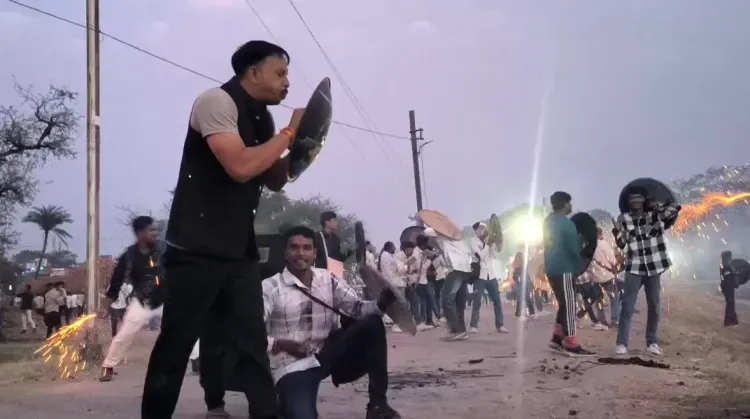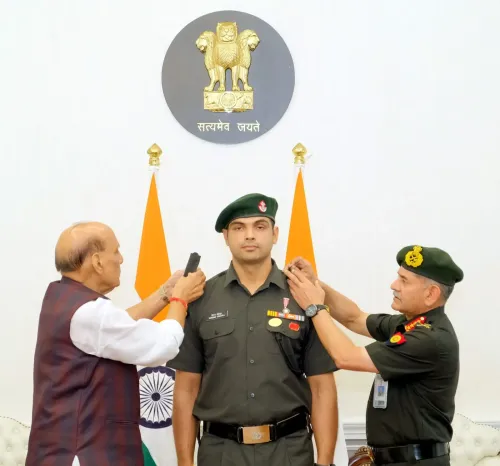What Happened During the Hingot War in Indore?

Synopsis
Key Takeaways
- Over 35 individuals suffered burns during the Hingot War.
- This festival takes place a day after Diwali in Gautampura.
- The battle is a historical tradition tracing back to the Mughal era.
- Participants use Hingot fruits filled with gunpowder in the competition.
- Local authorities are concerned about the safety of participants.
Indore, Oct 22 (NationPress) Over 35 individuals, including several minors, experienced burns during the annual Hingot War (fireball battle) festival that takes place a day after Diwali in Gautampura, located near Indore, as confirmed by officials on Wednesday.
Police and medical teams stationed at the event provided initial medical assistance to those who suffered burns, most of which were minor, according to a senior district official.
The Hingot battle, fought between the Turra team of Gautampura and the Kalangi team of Runji, commenced as both teams took their positions approximately 200 feet apart near the Devnarayan Temple.
Dressed in traditional garments and armed with shields and pouches filled with Hingots, the combatants ignited bamboo sticks and hurled the flaming shells at their opponents.
The administration had arranged for fire brigades, ambulances, and police forces to manage the crowd, yet the intensity of the event resulted in several injuries among participants. This year, the battle, which usually extends into the evening, was called off half an hour early due to increasing safety concerns, as noted by local authorities.
With roots tracing back to the Mughal era, this tradition is thought to have originated from Maratha soldiers utilizing hollowed-out Hingot fruits filled with gunpowder as makeshift grenades during guerrilla warfare.
Over the years, the Hingot weapon has transformed into a symbolic ritual, turning a once-deadly confrontation into a festive display of bravery. Young men partake in the Hingot battle as a demonstration of faith and valor, despite the genuine risks involved.
The Hingot itself is a wild fruit characterized by a tough outer shell. Once dried, its pulp is removed, and the hollow casing is packed with gunpowder and sealed with yellow clay.
As per local folklore, the Hingot war is rooted in the martial customs of the Gurjar warriors. The area surrounding Gautampura, historically inhabited by the Gurjar community, has been celebrated for its warrior ethos, bravery, and equestrian skills.









